In the world of business, every giant starts small. Today’s most iconic companies, household names and pillars of the global economy, once had humble beginnings. These initial establishments were far from the sprawling headquarters and global networks they now command. Often starting in unassuming locations like garages, small stores, or modest offices, they were driven by innovative ideas and a commitment to fulfilling unmet consumer needs. This post takes a stroll down memory lane, exploring the early days and first locations of these industry titans. It’s a journey that reminds us of the power of vision, determination, and the spirit of entrepreneurship.
The Birthplace of Innovation
The first locations of these companies were often incubators of innovation. In these spaces, founders and early employees brainstormed, developed, and refined the products or services that would later revolutionize their industries. The limitations of these early environments often fostered creativity, with teams finding unique solutions to overcome space, resource, and technological constraints. Many of these companies did not just bring new products or services to the market; they introduced innovative business models that transformed existing industries. From direct-to-consumer approaches to disruptive technologies, their beginnings were characterized by a willingness to break the mold and redefine what was possible in their respective fields.
#1 J.C. Penney, 1902
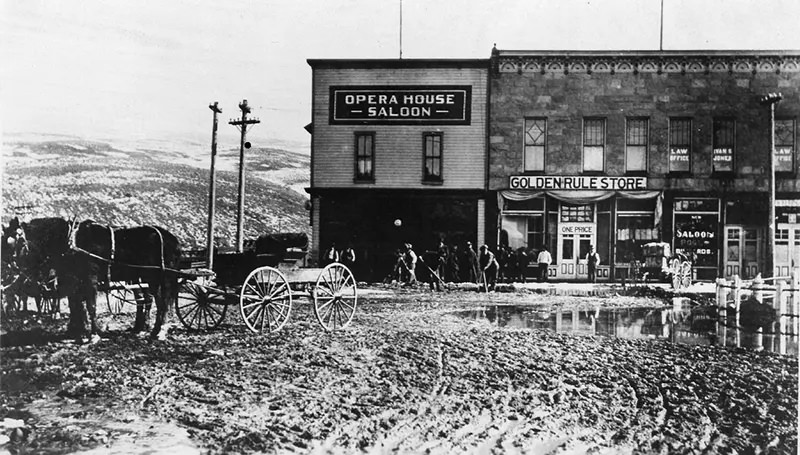
J.C. Penney, a name synonymous with American retail, traces its origins to the small town of Kemmerer, Wyoming. It was here, in 1902, that James Cash Penney embarked on a journey that would redefine the retail industry. With a humble beginning, Penney opened a small dry goods store, a venture that was rooted in his unwavering belief in the principles of quality and affordability. His vision was clear: to create a store that not only offered high-quality merchandise but did so at prices accessible to the average consumer. This commitment was coupled with an emphasis on exceptional customer service, a policy that would become a hallmark of the J.C. Penney brand.
The original store in Kemmerer, initially named the Golden Rule Store, was more than just a shopping destination. It reflected Penney's deep-seated ethos of fairness and integrity, principles he believed were critical to business success. This philosophy was encapsulated in the store's original name, alluding to the biblical principle of treating others as one would like to be treated.
#2 Harley-Davidson’s First Factory, 1903
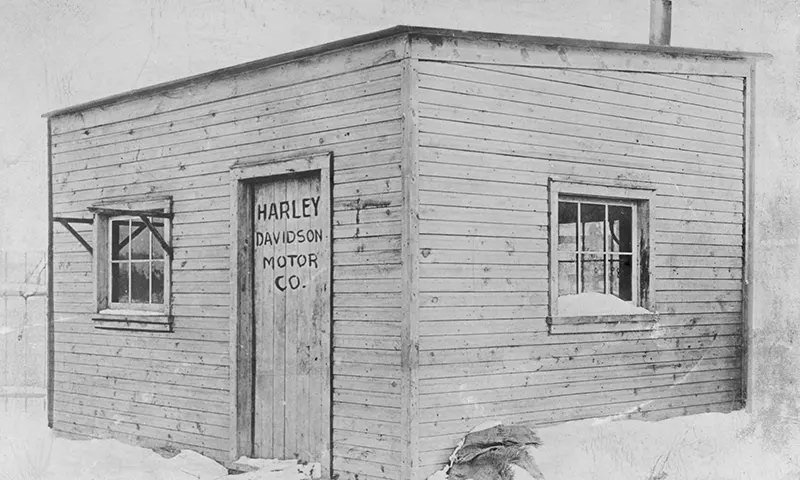
In 1903, the iconic American motorcycle brand Harley-Davidson was born in a modest 10 ft × 15 ft shed, a structure that would become a symbol of one of the most influential motorcycle companies in the world. This shed, constructed by Arthur Davidson's father, a skilled cabinet maker, served as the cradle of Harley-Davidson's first ventures into motorcycle manufacturing. Located in the Davidson family's backyard, this humble workshop was the birthplace of the brand's very first motorcycles.
William S. Harley and Arthur Davidson, the pioneers behind the brand, embarked on their ambitious journey in this small shed. Their initial production was remarkably limited, crafting just three motorcycles in their first year. However, their dedication and innovative spirit quickly led to growth. In 1904, recognizing the need for more space to meet the increasing demand, they expanded the shed to double its original size, allowing them to produce eight motorcycles.
#3 Highland Park Ford Plant, 1910
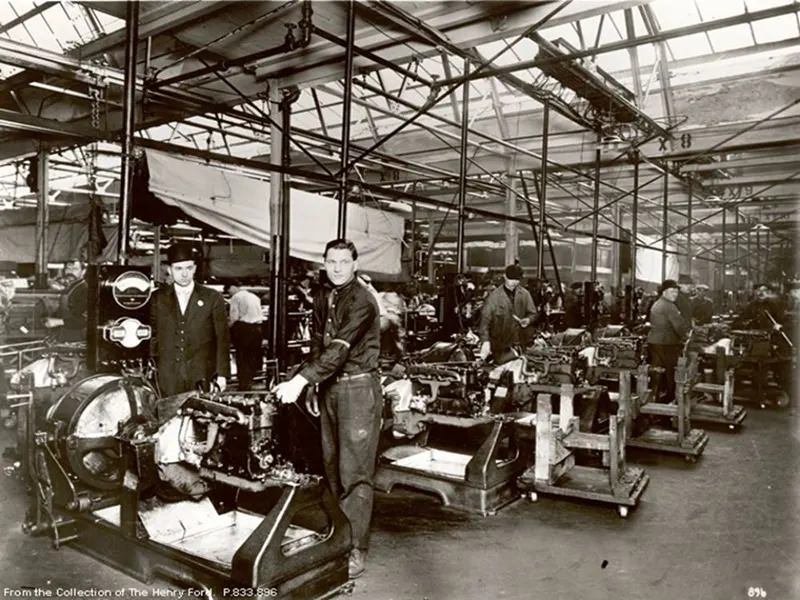
The Highland Park Ford Plant was inaugurated in 1910. And it emerged as one of the most revolutionary changes in manufacturing history. This Ford facility became the birthplace of the modern assembly line system, an innovation developed by Henry Ford in the 1910s that would forever transform the landscape of manufacturing. Prior to this innovation, automobile production was characterized by its slow pace and reliance on the meticulous craftsmanship of skilled workers. Each automobile was assembled piece by piece, a process that demanded significant time and labor, making cars a luxury few could afford.
Ford's vision was to revolutionize this approach, making automobiles accessible to a broader segment of the population. His groundbreaking concept involved the implementation of a moving conveyor belt system where workers were assigned specific, repetitive tasks. This method of production, known as the assembly line, was a stark departure from the traditional method of crafting cars entirely by hand.
The assembly line dramatically accelerated the production process. Cars that once took hours or even days to assemble could now be put together in a fraction of the time. This efficiency not only boosted production speed but also significantly reduced labor costs. The impact of this innovation extended far beyond the automobile industry. It served as a blueprint for manufacturing processes across various industries, ushering in an era of mass production and standardization.
#4 Coca-Cola in Dublin, Georgia, 1912
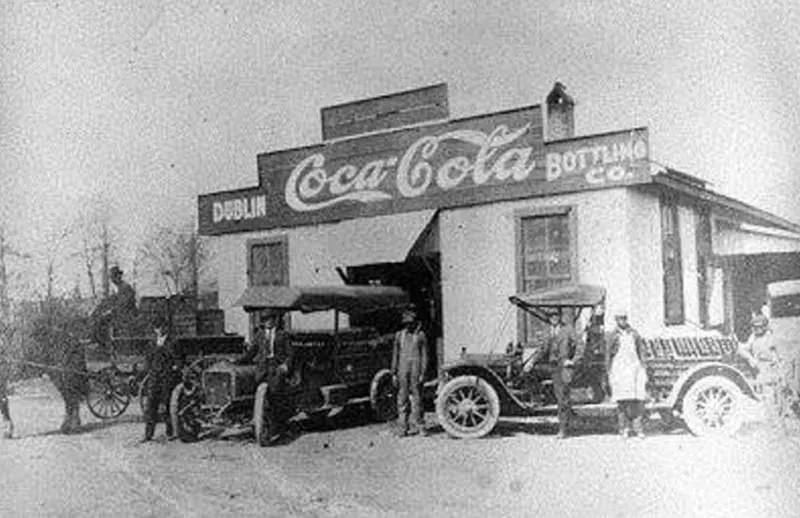
In 1912, the story of Coca-Cola in Dublin, Georgia, was already weaving its way into the fabric of American culture. This iconic beverage, which had started its journey as a temperance drink and a patent medicine, was the brainchild of John Stith Pemberton, a pharmacist from Atlanta, Georgia, who created it in the late 19th century. Originally, Coca-Cola was intended as a medicinal elixir, offering relief from various ailments and fitting into the broader context of patent medicines common in that era.
However, the fate of Coca-Cola took a significant turn when Pemberton, in 1888, sold the rights to the drink to Asa Griggs Candler. Candler, a savvy businessman with a keen eye for potential, transformed Coca-Cola from a medicinal tonic into a mainstream soft drink. His aggressive marketing strategies were pivotal in catapulting Coca-Cola to a dominant position in the global soft drink market, a status it has maintained throughout the 20th and into the 21st century.
The name "Coca-Cola" itself is derived from two of the drink's original ingredients: coca leaves and kola nuts. Coca leaves, known for their psychoactive alkaloids, and kola nuts, a source of caffeine, were integral to the beverage's original recipe and contributed to its unique flavor and stimulating properties.
#5 Sears, 1930s
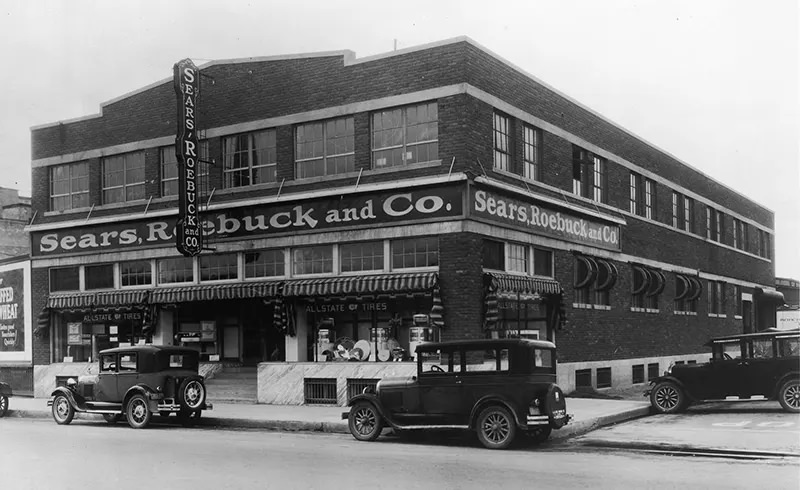
In the 1930s, Sears, Roebuck and Co. was a paragon of American retail, building upon a foundation laid in 1886 when Richard Sears and Alvah Roebuck embarked on their entrepreneurial journey. With an initial investment of just $5,000, they started a mail-order business focused primarily on watches and jewelry. This modest beginning set the stage for what would become a retail empire.
The growth of Sears was marked by a significant expansion of its inventory. From selling watches and jewelry, the company branched out into a vast array of products, including clothing, home goods, farm equipment, and even automobiles. This diversification was key to the company's appeal, as it transformed Sears into a one-stop shop for a wide range of consumer needs.
By the early 20th century, Sears had ascended to the ranks of the largest retailers in the United States. Its catalog, often referred to as "the Consumer's Bible," became a staple in American households. The anticipation and excitement surrounding the arrival of the Sears catalog spoke volumes about the company's deep penetration into the American lifestyle.
#6 Boeing Air Transport, 1930
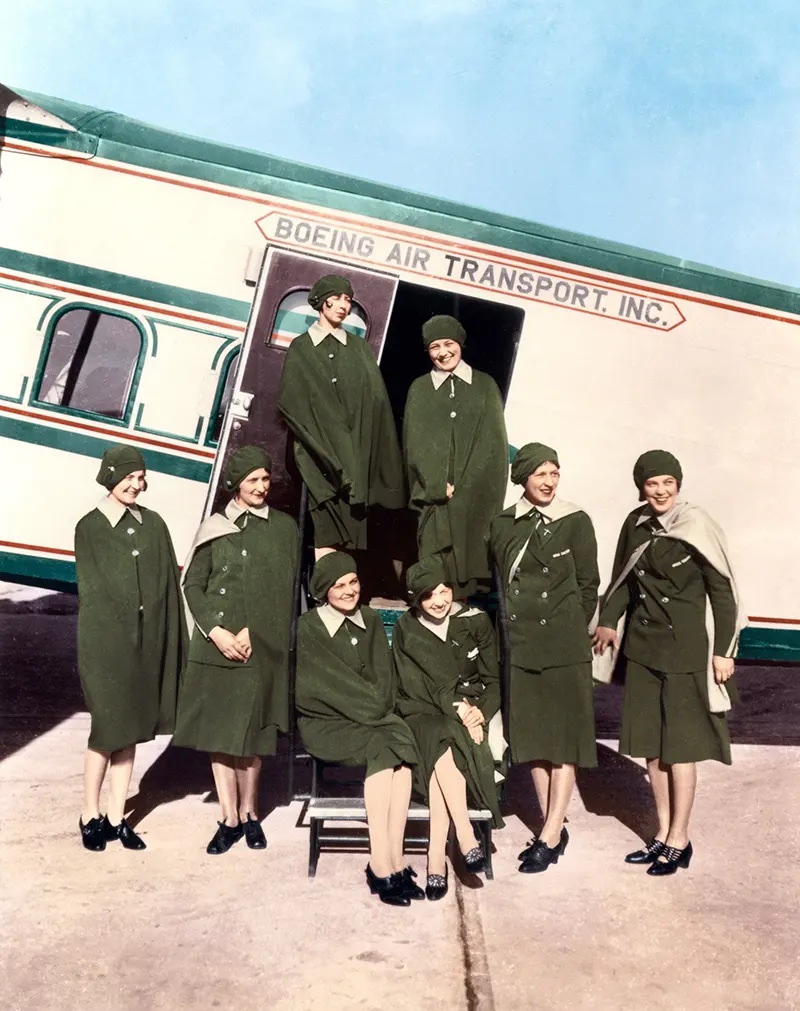
Established in 1927, BAT emerged as a subsidiary of the Boeing Company, which had been crafting airplanes since 1916, signaling Boeing's strategic expansion into the airline sector.
One of BAT's key advantages was its access to a fleet of state-of-the-art aircraft, notably including the Boeing 40A biplane. This aircraft was instrumental in establishing BAT's reputation for reliability and efficiency, characteristics that were vital in the early days of commercial aviation when public confidence in air travel was still developing.
The airline's first route, connecting San Francisco and Chicago, was a significant achievement. This route not only demonstrated the practicality and efficiency of long-distance air travel but also helped establish BAT as a reliable and promising player in the airline industry. The success of this route was a testament to the company's commitment to safety, reliability, and customer service.
#7 First Dairy Queen in Illinois, 1940
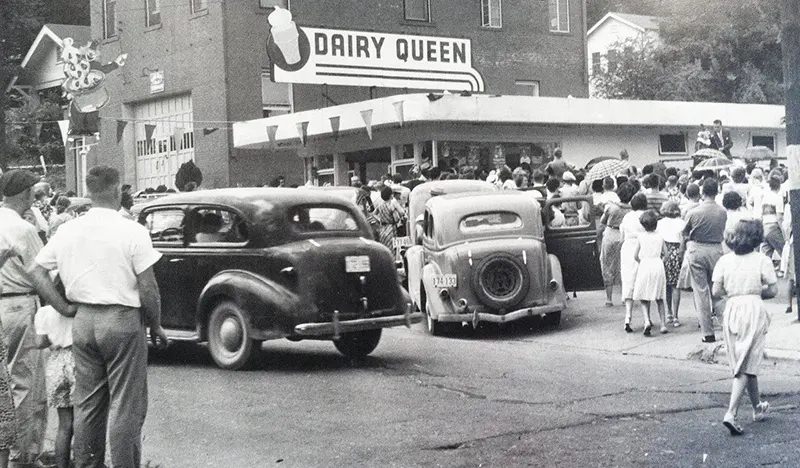
The origins of Dairy Queen, a brand now synonymous with soft-serve ice cream, can be traced back to 1938, two years before the first store officially opened its doors. This journey began with the invention of soft-serve ice cream by J.F. McCullough and his son, Alex. They were pioneers in reimagining ice cream, creating a softer, creamier version that would later become a staple treat for millions.
In a pivotal move, the McCulloughs partnered with Sherb Noble, an ice cream shop owner in Kankakee, Illinois. They convinced Noble to introduce their soft-serve ice cream in his shop, a decision that would mark the beginning of Dairy Queen's story. The new ice cream variety was an instant success, evidenced by an overwhelming response during an all-you-can-eat ice cream sale at Noble's shop. During this event, they served an astonishing 1,600 customers in just two hours, a clear indication of the public's enthusiasm for this new style of ice cream.
Encouraged by this immediate success, Noble and the McCulloughs decided to take the next step. On June 22, 1940, they opened the first Dairy Queen store. This inaugural store was located along the historic Route 66 in Joliet, Illinois. The choice of location was significant, as Route 66 was one of the most famous roads in America, symbolizing adventure and the open road.
#8 Capitol Records First Location, 1940s
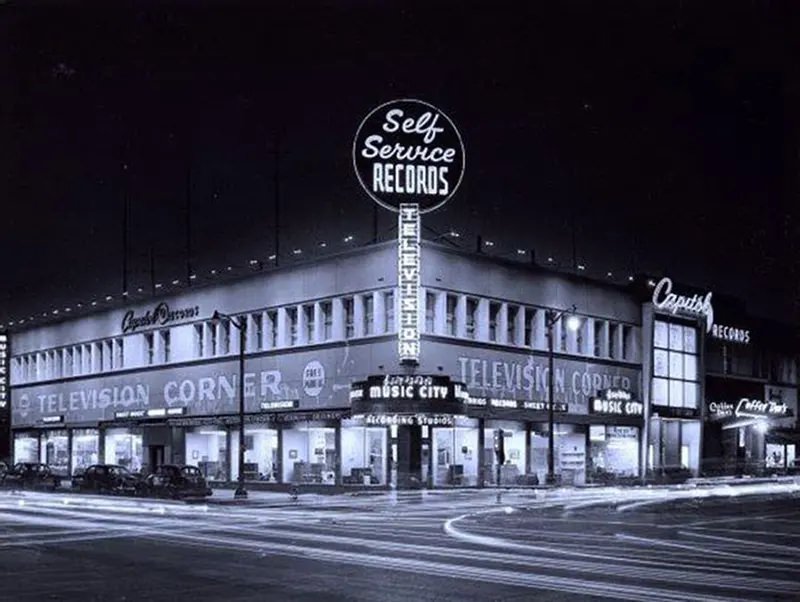
Founded in 1942 by the renowned songwriter and performer Johnny Mercer and songwriter-producer Buddy DeSylva, Capitol Records quickly established itself as a major force in the music industry. In its formative years, the label primarily concentrated on popular music genres such as jazz, swing, and big band, carving a niche for itself in these vibrant musical landscapes.
Capitol Records' journey to prominence began in earnest with the release of “Cow Cow Boogie” in 1943. This song, a collaborative effort by Mercer and his band, the Pied Pipers, achieved chart-topping success, heralding Capitol's ascent in the music world. This success was not just a commercial triumph but also a signifier of the label's potential to shape musical trends.
In the ensuing decades, Capitol Records continued to grow, signing a slew of iconic artists that included the likes of Nat King Cole, Frank Sinatra, and the Beatles. This expansion wasn't limited to its artist roster; the label also embraced and promoted new genres and styles, notably playing a pivotal role in popularizing rock and roll during the 1950s and 1960s.
#9 First Carl’s Jr Hot Dog, 1941
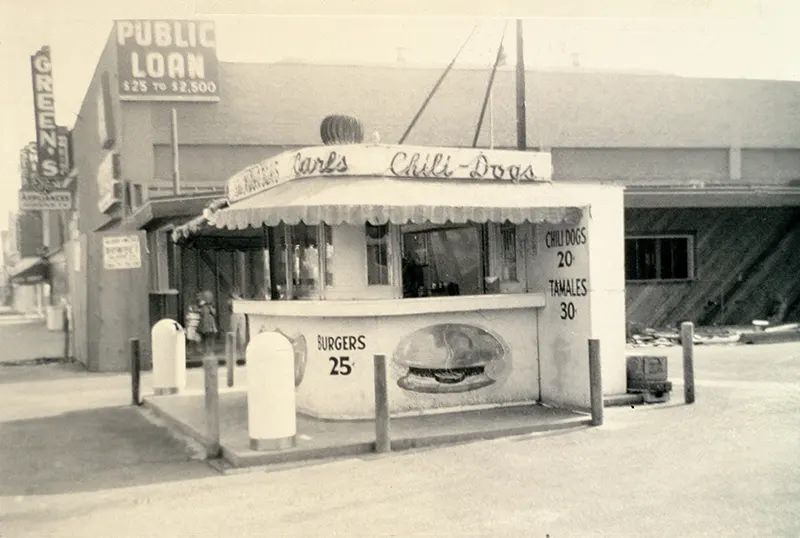
Carl's Jr., a well-recognized name in the fast-food industry, has its roots in the entrepreneurial spirit of Carl Karcher. The journey of this famed chain began in 1941 in Los Angeles, California, but its prelude was set a year earlier in 1940 when Karcher and his wife, Margaret, ventured into the food business. They started with a modest hot dog stand known as Carl's Drive-In Barbecue, laying the groundwork for what would eventually become Carl's Jr.
This hot dog stand was more than just a business; it was a family-run endeavor that quickly made a name for itself with its specialty hot dogs and chili dogs. Karcher's dedication and hard work played a crucial role in building a strong and loyal customer base, a testament to his entrepreneurial acumen.
In 1941, Karcher, along with his business partner John Galardi, decided to broaden their culinary horizons by adding hamburgers to their menu. This addition marked a significant turning point for the business. Along with this menu expansion, they rebranded the establishment to Carl's Jr., a name symbolizing the superior size and quality of their burgers compared to other fast-food offerings.
#10 Burger King, 1953
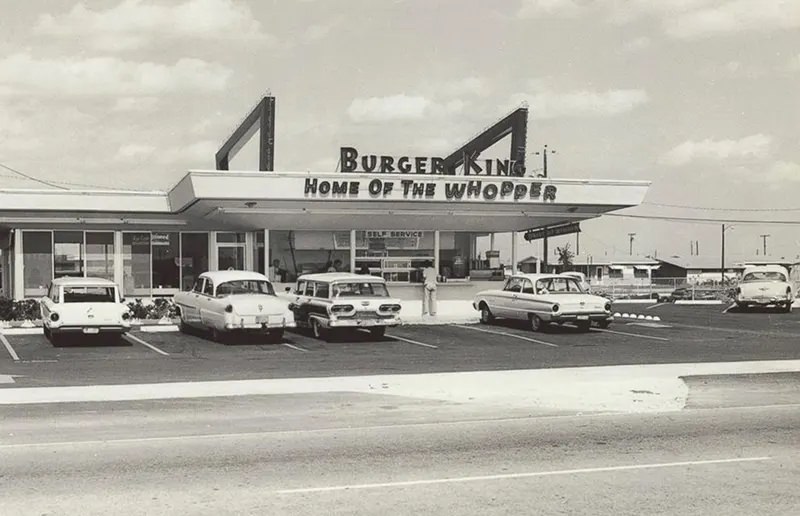
Before Burger King became a household name, its origins can be traced back to 1953 in Jacksonville, Florida, under the name Insta-Burger King. The inception of this fast-food chain was inspired by a visit to the McDonald brothers' original store in San Bernardino, California, by founders Keith J. Kramer and his wife’s uncle, Matthew Burns. Motivated by what they saw, they purchased the rights to two innovative pieces of equipment known as “Insta-machines” and opened their first restaurants, setting the stage for a new player in the burgeoning fast-food industry.
A key element of their business model was the "Insta-Broiler," an oven that was pivotal in defining their approach to food preparation. The effectiveness and efficiency of the Insta-Broiler were such that it became a cornerstone of their operations, eventually becoming a mandatory fixture in all their franchise locations.
#11 Walt Disney at Disneyland, 1955
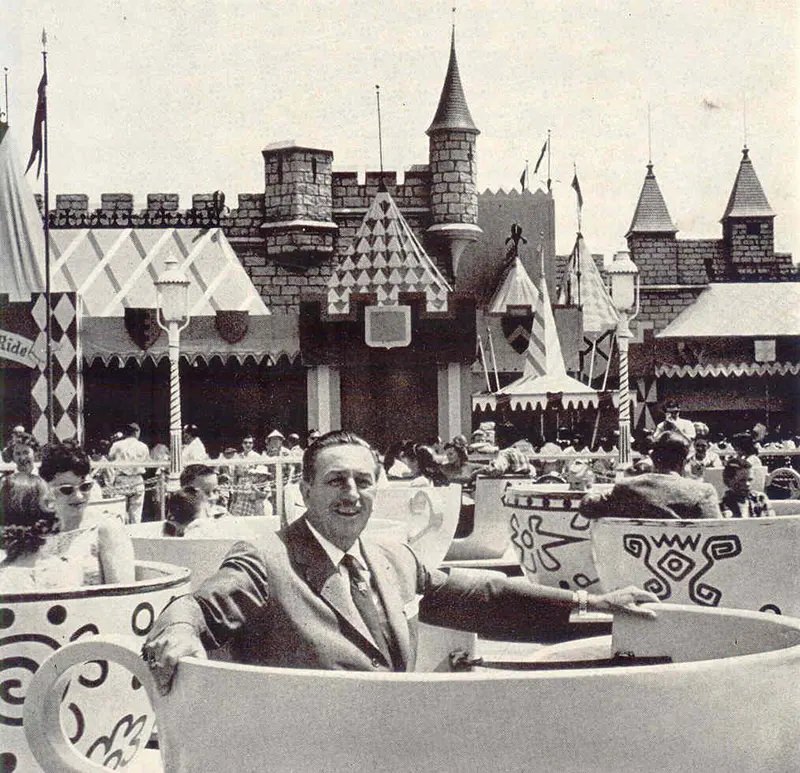
Opening its gates on July 17, 1955, it was a groundbreaking venture, being the first theme park to amalgamate multiple themed areas, rides, and attractions in one location. Walt Disney's vision was to create a magical realm where families could immerse themselves in a world of fun, adventure, and wonder, an idea that resonated deeply with visitors of all ages, making Disneyland a cherished destination.
The early years of Disneyland were a period of remarkable creativity and relentless innovation. Walt Disney, along with his team of Imagineers—a term combining 'imagination' and 'engineers'—dedicated themselves to crafting unique attractions and experiences that would captivate visitors. This period was characterized by a spirit of exploration and the constant pursuit of bringing imaginative concepts to life.
Iconic rides such as the Matterhorn Bobsleds and the Disneyland Monorail were among the many innovations introduced in these formative years. These attractions were not just amusement rides; they were embodiments of Disney's vision of blending storytelling, technology, and entertainment in new and exciting ways. The Matterhorn Bobsleds, for instance, was the first tubular steel continuous track roller coaster in the world, illustrating Disney's commitment to pushing the boundaries of what was possible in theme park entertainment.
#12 Walmart, 1962
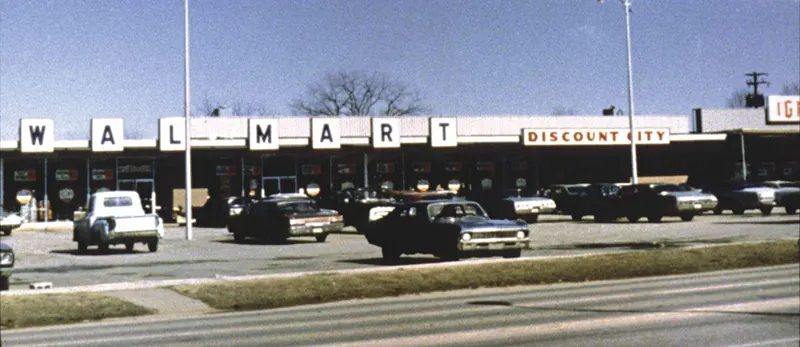
In 1962, Sam Walton founded Walmart in Bentonville, Arkansas, starting as a small retail store with a focus on selling discount goods. Walton's business philosophy revolved around offering low prices, convenience, and exceptional customer service. He pioneered the concept of buying in bulk and transferring the savings to customers, allowing Walmart to offer lower prices than competitors, thereby rapidly gaining market share. The first store opened in Rogers, Arkansas, and by the mid-1960s, Walton expanded to 24 stores within Arkansas. Walmart's initial public offering in 1968 raised $5 million, fueling further expansion. Throughout the 1970s, Walmart's growth continued beyond Arkansas, reaching into Missouri, Oklahoma, and Kansas. By 1979, Walmart had over 270 stores, evolving from a regional chain into a national retailer.
#13 Taco Bell, 1962
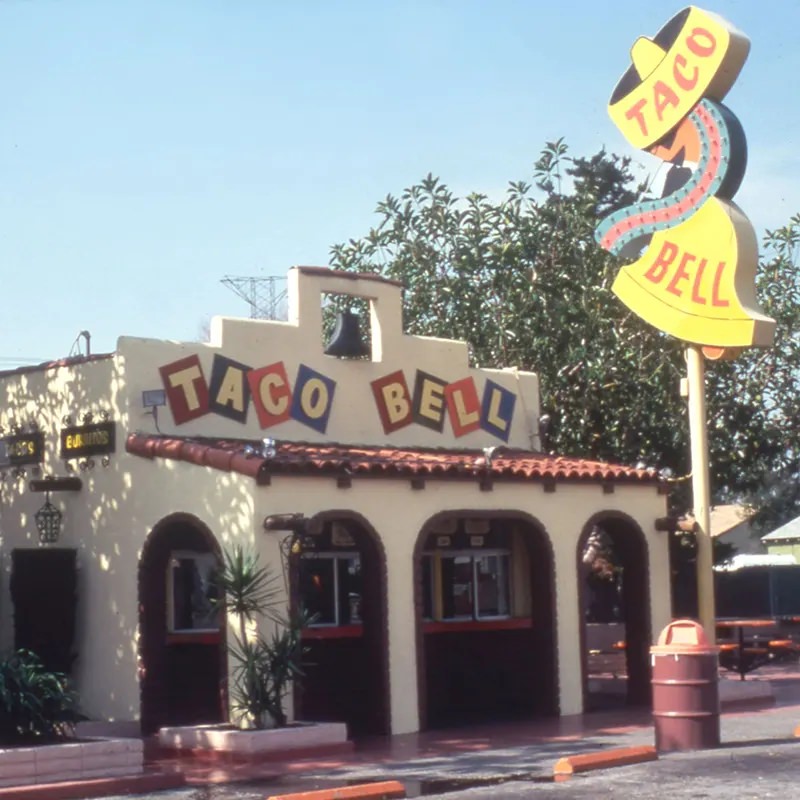
Glen Bell, an enterprising businessman, laid the foundation for Taco Bell with his initial venture, Bell's Drive-In, a hot dog stand in San Bernardino, California, in 1948. Bell observed the popularity of the Mitla Cafe, especially for its hard-shelled tacos, which attracted long lines of customers. Intrigued, he set out to reverse-engineer their taco recipe, a task that eventually led to the cafe's owners showing him their preparation methods. Armed with this knowledge, Bell opened a new food stand in 1951, experimenting with different names including Taco-Tia and El Taco, before finally settling on the now-famous Taco Bell. This marked the beginning of a brand that would grow to become a major player in the fast-food industry.
#14 The First Arby’s, 1964
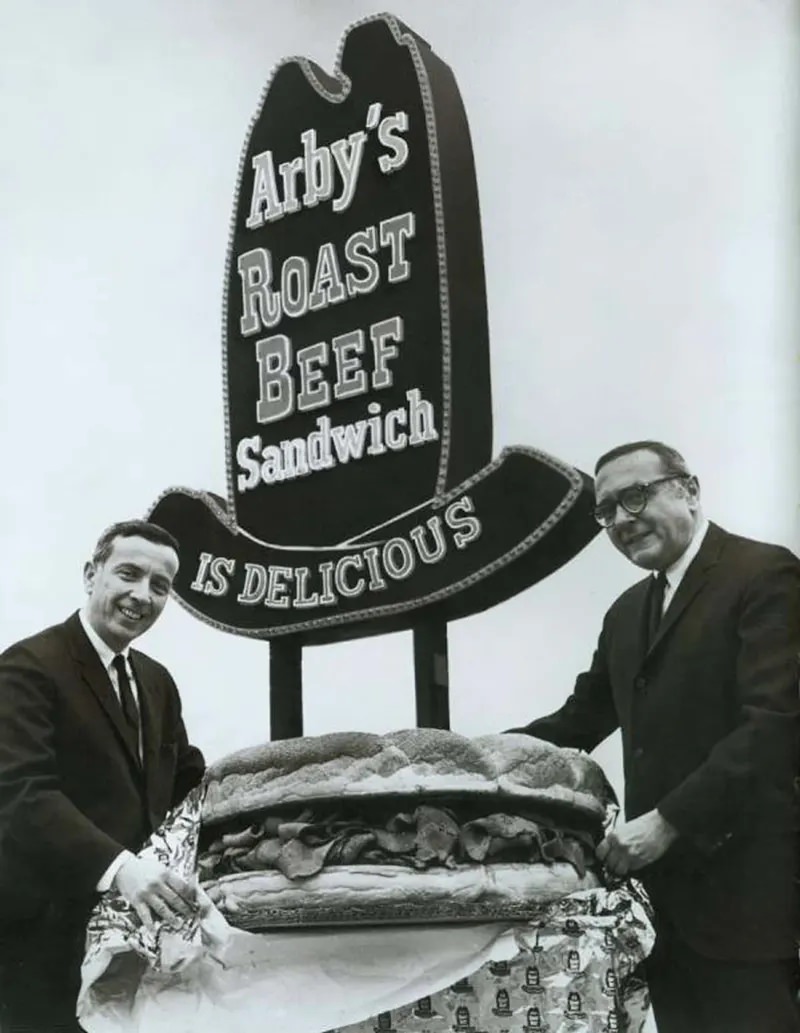
Founded in 1964 in Boardman, Ohio, by Forrest and Leroy Raffel, Arby's quickly carved a niche in the fast-food industry with its specialty in roast beef sandwiches. The name "Arby's" is a play on "RB," standing for roast beef, their signature offering. Identifying a gap in the market for fast-food roast beef sandwiches, the Raffel brothers developed a unique recipe featuring slow-roasted beef, thinly sliced and served on a toasted bun with the distinctive Arby's Sauce.
The first Arby's was a drive-in restaurant that became popular rapidly, thanks to its focus on high-quality ingredients and customer service. The Raffels aimed to blend the convenience of fast food with the ambiance of a sit-down restaurant, prioritizing friendly service and freshly made-to-order sandwiches.
#15 TGI Friday’s, 1965
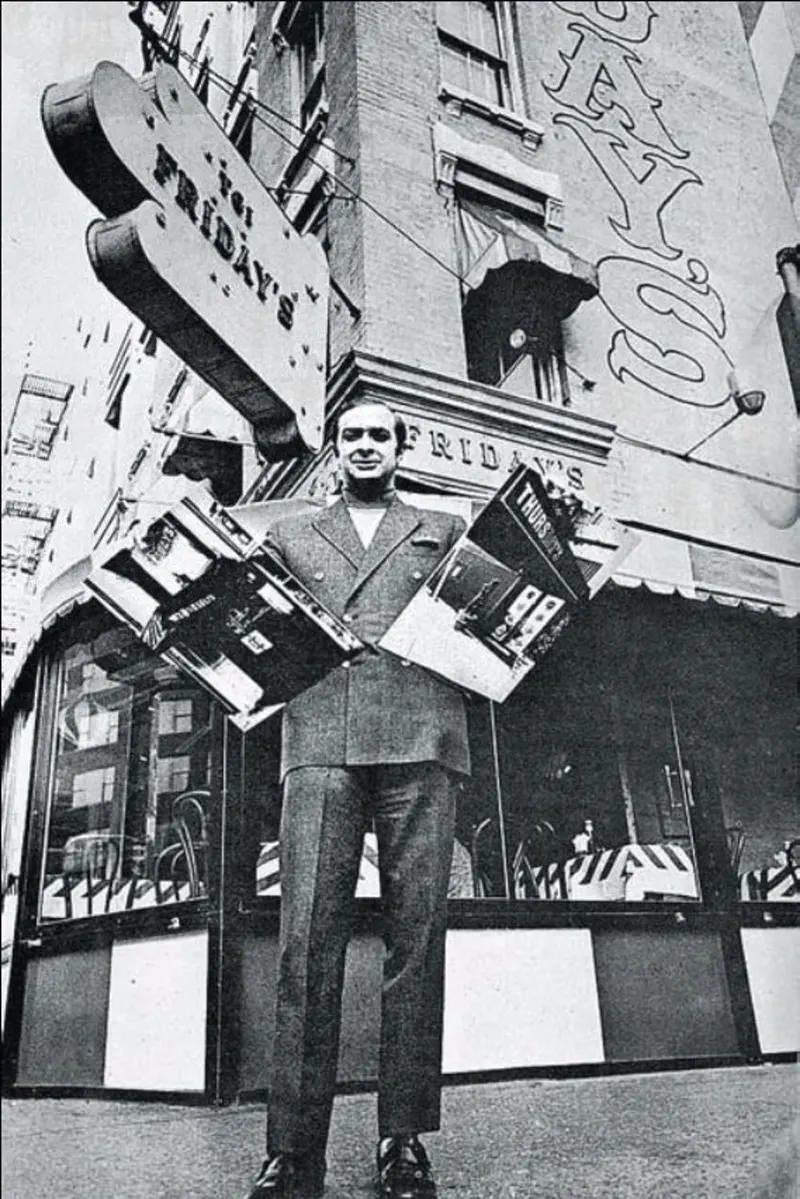
In 1965, Alan Stillman opened the first TGI Fridays restaurant in an effort to revolutionize the social scene in New York. Living in a neighborhood bustling with young, single professionals including airline stewardesses, fashion models, and secretaries on East 63rd Street between First and York near the Queensboro Bridge, Stillman noticed a gap in social venues. He observed that options were limited to private cocktail parties or traditional men's bars, which weren't appealing or welcoming to women.
Stillman envisioned a new kind of public space that would bridge this gap – a place where young adults, especially those between the ages of twenty-three and thirty-seven, could gather, socialize, and meet each other in a comfortable and inviting setting. With this idea, he aimed to recreate the ambiance of a friendly cocktail party in a public restaurant setting, despite having no prior experience in the restaurant industry.
#16 Subway, 1965
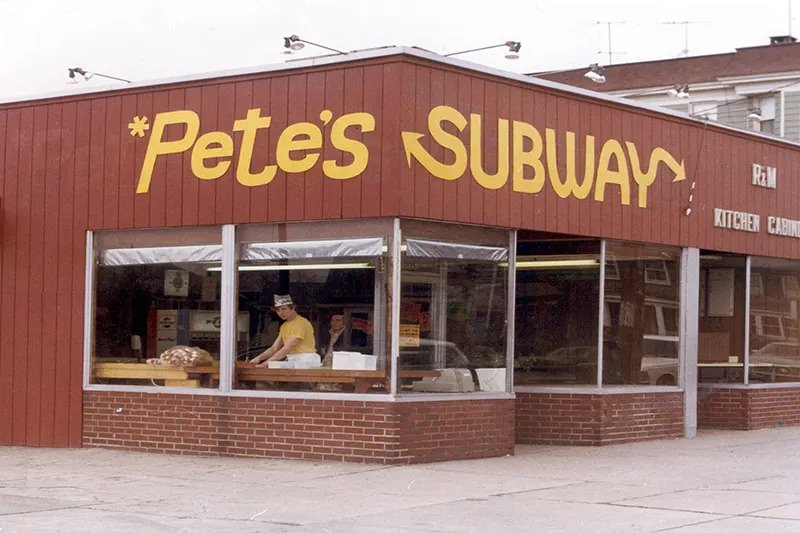
In 1965, Subway began its journey as Pete's Super Submarines in Bridgeport, Connecticut, a venture initiated by Fred DeLuca and financially supported by Peter Buck. Initially experiencing several name changes, the eatery found its identity as Subway in 1972. The transformation into a franchise operation commenced in 1974, with the opening of a second location in Wallingford, Connecticut. Since these early days, Subway has evolved into a vast global franchise.
Subway's unique selling point lies in its customizable sandwiches, offering a wide array of toppings for customers to personalize their orders. This flexibility in choice has been a key factor in the brand's popularity. The slogan “Eat Fresh,” long associated with Subway, underscores the commitment to fresh ingredients, a core aspect of their menu offerings. This focus on freshness and customization has helped Subway carve out a significant niche in the fast-food industry.
#17 Wendy’s, 1969
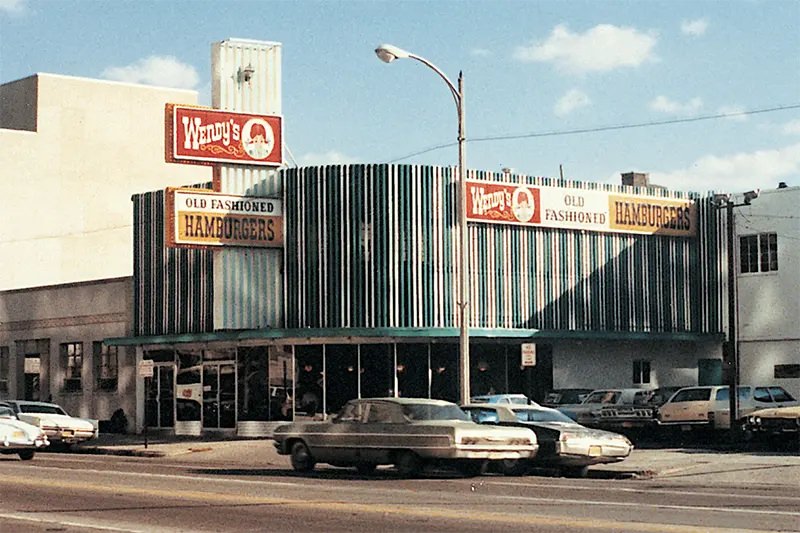
Dave Thomas, inspired by his visits to Kewpee Hamburgers in his hometown of Kalamazoo, Michigan, founded Wendy's in 1969 in Columbus, Ohio. Kewpee was known for its distinctive square hamburgers and rich malt shakes, elements that Thomas incorporated into Wendy’s. He introduced square patties that extended beyond the edges of the round buns, a design meant to showcase the quality and abundance of the meat.
Thomas named the restaurant Wendy’s after his fourth child, Melinda Lou "Wendy" Thomas. In the original Wendy's restaurant, photographs of her were displayed, connecting the brand to a personal element of Thomas's life. However, in his autobiography, Thomas expressed regret over naming the restaurant after his daughter. He noted that as Wendy's grew into a fast-food empire, the decision inadvertently impacted her privacy, with many mistaking her as the official spokesperson for the chain.
#18 Virgin Records, 1971
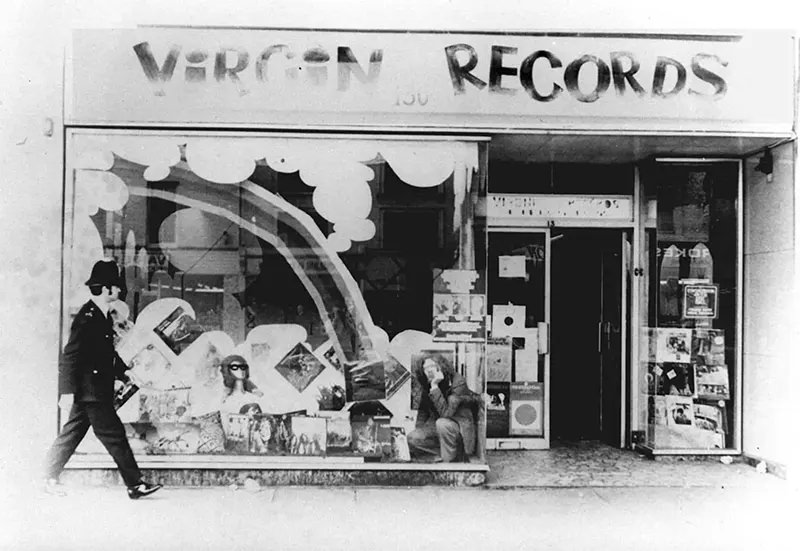
Virgin Records, founded in 1972 as a British independent record label, is the brainchild of entrepreneurs Richard Branson, Simon Draper, Nik Powell, and musician Tom Newman. Over the years, it evolved from an independent label into a major player in the music industry. This transformation was fueled by the label's association with a host of platinum-selling artists, including Paula Abdul, Janet Jackson, Devo, Tangerine Dream, Genesis, Phil Collins, OMD, the Human League, Culture Club, Simple Minds, Lenny Kravitz, the Sex Pistols, and Mike Oldfield.
The success of these artists played a pivotal role in elevating Virgin Records to the status of a major label. By the time it was sold, Virgin Records had established itself alongside other large international independents like A&M and Island Records. This growth trajectory highlights Virgin Records' significant impact and influence in the music industry, driven by a roster of diverse and talented artists.
#19 Starbucks, 1971
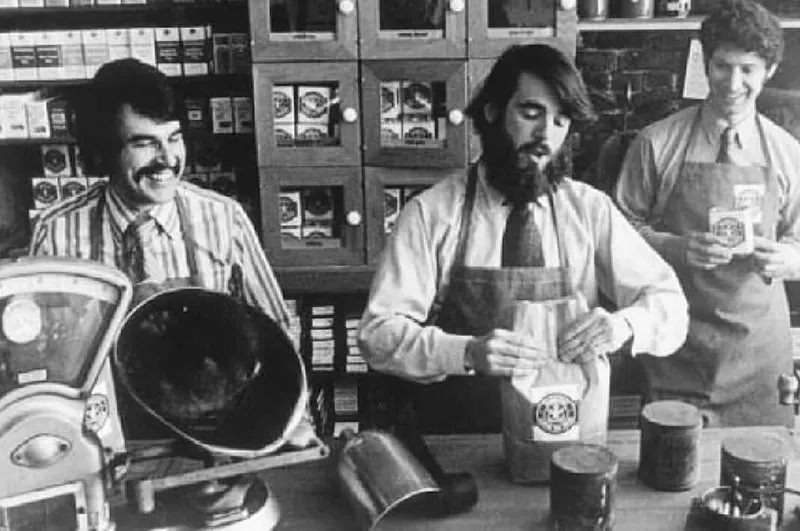
Starbucks, now a global coffeehouse chain, was established in 1971 by Jerry Baldwin, Zev Siegl, and Gordon Bowker at Seattle's Pike Place Market. Initially, Starbucks was a store focused on selling coffee beans rather than a place for enjoying coffee drinks. However, the company's trajectory changed dramatically in the early 1980s after being sold to Howard Schultz.
Schultz, inspired by a business trip to Milan, Italy, transformed Starbucks into a coffee shop that served espresso-based drinks. Under his leadership as CEO from 1986 to 2000, Starbucks underwent aggressive expansion, initially proliferating throughout Seattle and subsequently spreading across the West Coast of the United States.
Following Schultz's tenure, Orin Smith took over the helm of Starbucks. During his five-year leadership, he significantly contributed to positioning Starbucks as a major player in fair trade coffee. Under Smith's guidance, Starbucks not only embraced ethical sourcing practices but also saw a remarkable increase in sales, reaching US$5 billion.
#20 Microsoft, 1978
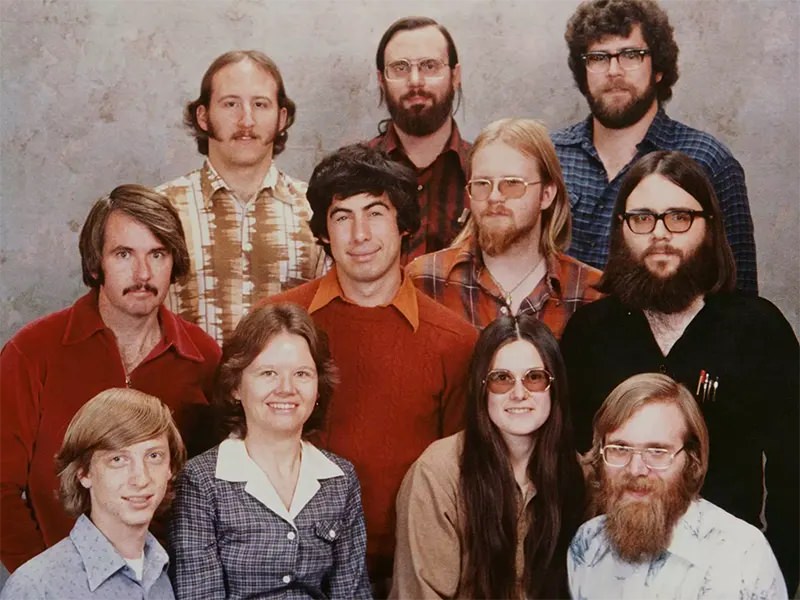
Founded on April 4, 1975, by Bill Gates and Paul Allen, Microsoft started its journey by developing and selling BASIC interpreters for the Altair 8800. It wasn't long before the company rose to prominence, dominating the personal computer operating system market. This domination began with MS-DOS in the mid-1980s, which was soon followed by the introduction of the Windows operating system, a major milestone that cemented Microsoft's position in the tech industry.
A significant turning point for Microsoft was its 1986 initial public offering (IPO). The IPO and the subsequent surge in share price resulted in extraordinary wealth creation, including the emergence of three billionaires and approximately 12,000 millionaires among its employees. This financial success was indicative of Microsoft's monumental impact on the technology sector.
#21 Whole Foods, 1980
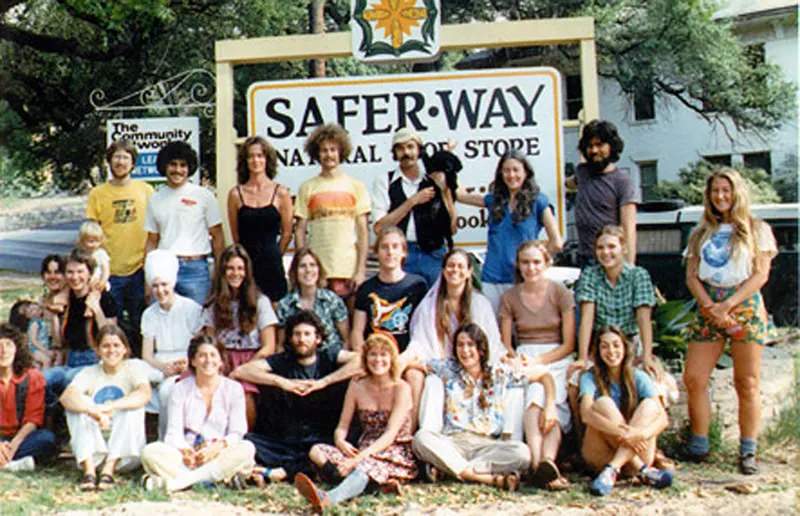
In 1978, John Mackey and Renee Lawson, fueled by entrepreneurial spirit and a $45,000 loan from family and friends, launched SaferWay, a small vegetarian natural foods store in Austin, Texas. The store's name, a playful riff on the well-known Safeway supermarkets, marked the beginning of a unique venture in the health food sector.
Mackey and Lawson's dedication to their business was extraordinary. When evicted from their apartment for storing food products, they made the bold decision to live in their store, despite it being zoned for commercial use and lacking residential amenities like a shower. They resourcefully adapted, bathing using a hose attached to their dishwasher.
#22 Amazon, 1994
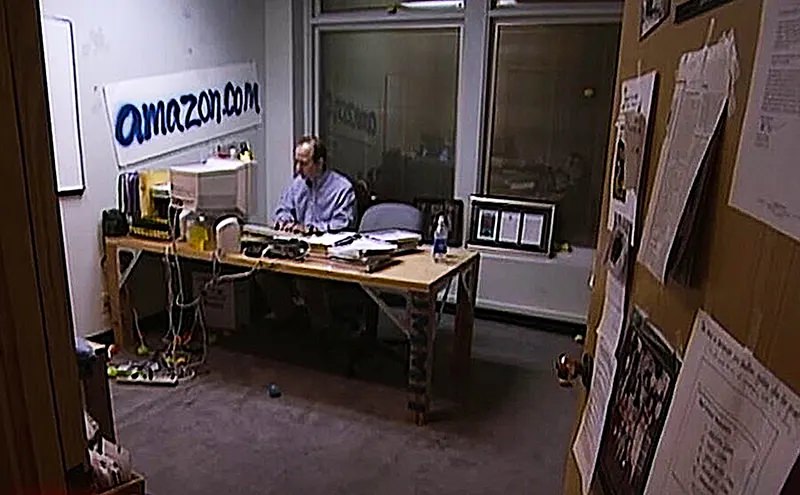
In July 1994, Jeff Bezos, then a hedge fund manager, founded Amazon.com, Inc. in his garage after leaving his job and relocating to Seattle. Originally named Cadabra, Bezos soon changed the company's name to Amazon, inspired by the Amazon River, the largest river in the world, symbolizing the scale he envisioned for his venture.
Amazon began as an online bookstore, a pioneering step in the e-commerce world. In its early days, Bezos was deeply involved in operations, even personally delivering Amazon's first package to a customer in 1995. By the end of that year, Amazon had reached customers in all 50 states of the U.S. and 45 countries worldwide, showcasing its rapid growth and wide appeal.
#23 Levi Strauss & Co., 1880
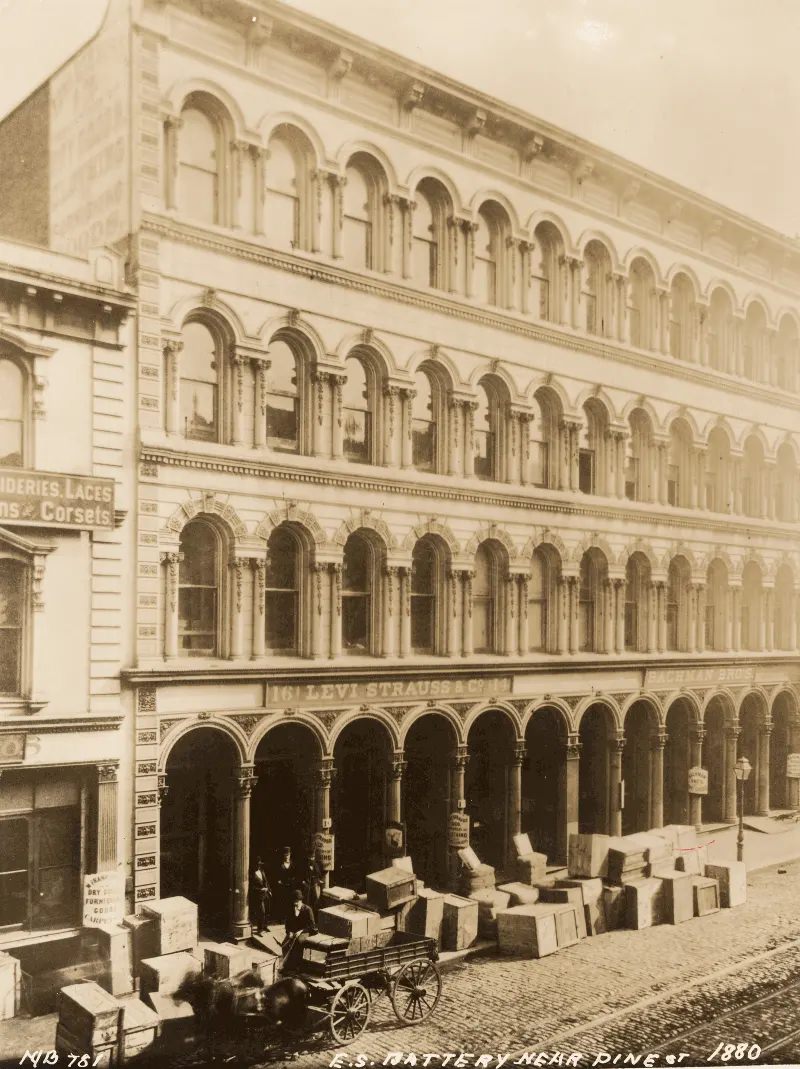
Levi Strauss, born in Bavaria in 1829, embarked on a journey that would revolutionize the clothing industry. He immigrated to the United States in 1847, initially settling in New York City. In 1853, seeking new opportunities, Strauss moved to San Francisco, where he established a wholesale dry goods business, seizing the entrepreneurial spirit of the burgeoning American West.
A pivotal moment came in 1873 when Strauss partnered with tailor Jacob Davis. Together, they created a work pant from durable denim fabric, reinforcing it with rivets at stress points. This innovation led to the birth of “blue jeans,” a garment initially designed for miners and laborers, valued for its durability and practicality.
#24 Dunkin’ Donuts, 1948
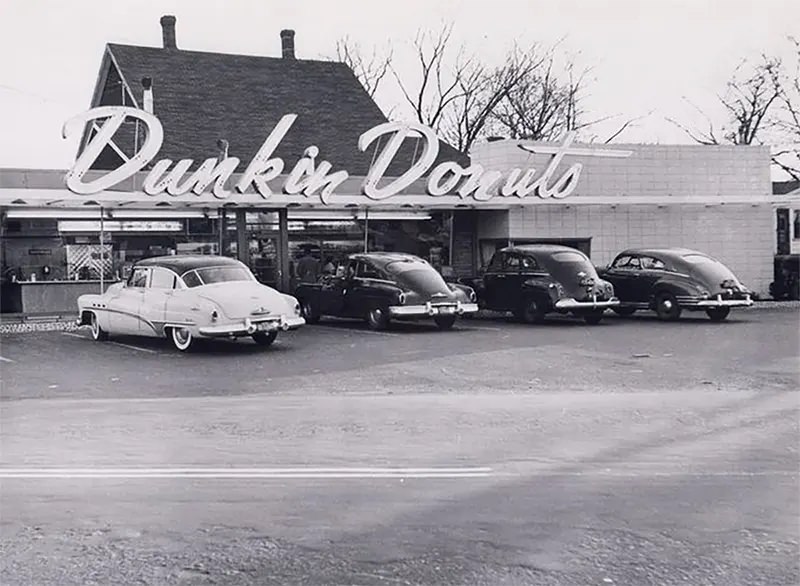
Dunkin' Donuts, a now-iconic brand in the fast-food and coffee industry, began its journey in 1950. Founded by William Rosenberg in Quincy, Massachusetts, it was initially named “Open Kettle.” This small shop catered primarily to factory workers, offering them coffee and doughnuts—a simple yet appealing combination. Recognizing the potential for growth, Rosenberg rebranded the shop to Dunkin’ Donuts in 1955 and embarked on a franchising model, a decision that would significantly contribute to the brand's expansion.
The company experienced rapid growth in the following years, both within the United States and internationally. Dunkin' Donuts' success was not just due to its coffee and doughnuts; in the 1970s and 1980s, the brand diversified its menu to include bagels, muffins, and breakfast sandwiches. This expansion of offerings allowed Dunkin’ Donuts to appeal to a broader audience, making it a popular destination for a wide range of quick-service food options.
#25 Kmart, 1899
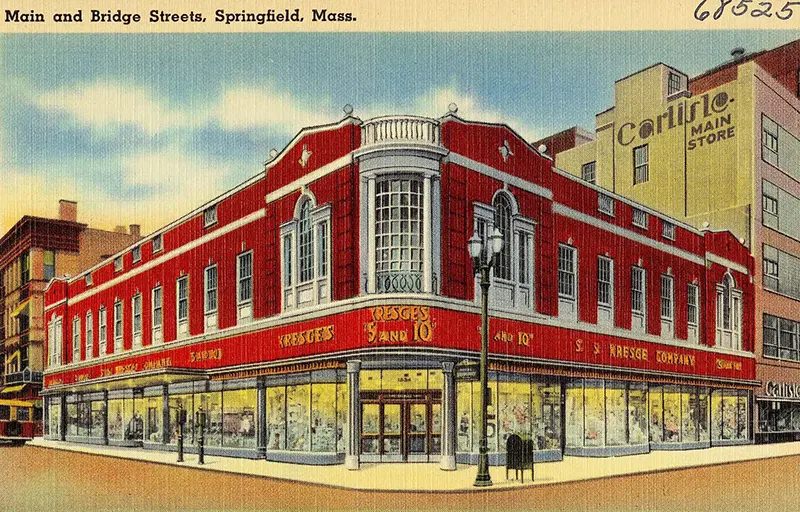
Kmart, a once-dominant player in the retail sector, traces its origins to 1899 when Sebastian S. Kresge opened a five-and-dime store in Detroit, Michigan. This store set the foundation for Kmart, offering a variety of low-priced goods such as clothing, household items, and toys. This business model proved successful, paving the way for Kmart's expansion.
By the 1960s, Kmart had grown into a nationwide chain of discount stores, diversifying its product range while maintaining affordable pricing. The company's decision to go public in 1918 marked the beginning of a significant growth phase that continued throughout the 20th century, including expansion within the United States and into international markets.


While interesting, I fail to see what that has to do with the field of Business Intelligence.